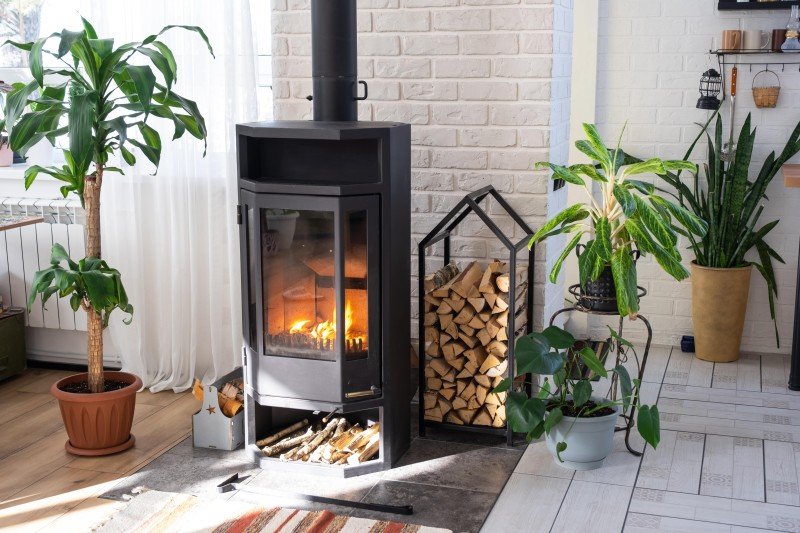The Traditional Fireplaces UK Success Story You'll Never Remember
The Timeless Appeal of Traditional Fireplaces in the UK
Traditional fireplaces have long been essential to homes throughout the United Kingdom, transcending simple energy to end up being focal points of heat, convenience, and aesthetic beauty. This post looks into the enduring appeal of traditional fireplaces, exploring their history, style variations, installation considerations, and their modern-day significance.
Historical Significance of Fireplaces
The fireplace has actually played a central role in British homes given that medieval times. Originally, they were necessary for heating and cooking. Over the centuries, with the development of central heating and technological improvements, fireplaces have actually changed into symbols of heritage and style.
Key Historical Milestones
Date
Turning point
Description
12th Century
Introduction of Chimneys
Permitted indoor fireplaces to be typical, improved ventilation.
16th Century
The Renaissance influence
Fireplaces became more ornamental, reflecting the period's styles.
18th Century
The Georgian Era
Established detailed mantels made from wood and stone.
19th Century
Victorian Era
Introduction of cast-iron and tiled fireplaces.
20th Century
Decrease and Modern Design
Shift towards gas and electric, with some revival of traditional styles.
Kinds Of Traditional Fireplaces
While contemporary styles focus on minimalism, traditional fireplaces frequently exhibit detailed workmanship and historical significance. Here are some popular types of traditional fireplaces frequently discovered in the UK:
Open Hearth Fireplaces
- Identified by a large opening and usually built from brick or stone.
- Supplies a cozy atmosphere and the noise of crackling flames.
- Needs a correct flue to reroute smoke outdoors.
Wood-Burning Stoves
- Enclosed systems that burn wood for heat, frequently featuring a glass door.
- More effective than open hearths, providing much better heat retention.
- Available in numerous styles, from rustic to contemporary.
Cast Iron Fireplaces
- Popular in the Victorian age, understood for ornate designs.
- Long lasting and renowned for excellent heat conduction.
- Normally function intricate patterns or motifs, enhancing aesthetic appeal.
Tiled Fireplaces
- Often embellished with decorative tiles, these fireplaces showcase artistic flair.
- Typical in the 19th century, tiles can feature scenes or flower styles.
- Normally coupled with wood or cast iron elements.
Marble Fireplaces
- Distinguished for their sophistication, these fireplaces are typically customized.
- Marble uses an elegant finish and matches numerous interior styles.
- They need mindful setup due to their weight.
Table: Comparison of Traditional Fireplace Types
Fireplace Type
Heat Efficiency
Aesthetic Appeal
Upkeep Needs
Fuel Type
Open Hearth
Low
High
High (chimney cleaning)
Wood
Wood-Burning Stove
High
Moderate
Moderate (wood supply)
Wood
Cast Iron
High
High
Low
Wood/Gas
Tiled
Moderate
Very High
Low (if non-usable)
N/A
Marble
Moderate
Really High
Moderate
N/A
Considerations for Installing a Traditional Fireplace
Setting up a traditional fireplace can boost a home's character but comes with particular considerations. Here are some points property owners should bear in mind:
Building Regulations: Always examine local structure codes and policies. Fireplaces Deals may require permission, specifically if structural modifications are needed.
Material Selection: Choose materials that match the home's architecture and personal style. Think about usefulness together with aesthetic appeal.
Ventilation: Ensure proper ventilation through a chimney or flue to avoid smoke and gases from building up indoors.
Safety Precautions: Install carbon monoxide gas detectors and guarantee all precaution remain in location, particularly if utilizing wood-burning alternatives.
Professional Installation: Engage a qualified professional to ensure safe and effective installation, abiding by security requirements.
Advantages of Traditional Fireplaces
In spite of the rise of modern heating solutions, traditional fireplaces remain beloved for numerous reasons:
Aesthetic Charm
- Includes character to any room.
- Functions as a social focal point, boosting events.
Psychological Comfort
- Supplies warmth not just physically but mentally.
- Creates a cozy environment ideal for relaxation.
Value Addition to Property
- Improves the appeal of a home to prospective purchasers.
- Typically increases residential or commercial property value due to their desirability.
Environmental Considerations
- Wood can be an eco-friendly resource when sourced sustainably.
- Traditional fireplaces can contribute less to energy bills compared to electric systems.
Often Asked Questions (FAQs)
1. Are traditional fireplaces energy efficient?
While traditional fireplaces may not be as energy-efficient as modern heating unit, improvements in style, such as the setup of glass doors, can improve their performance. Wood-burning stoves are particularly understood for being more effective than open hearths.
2. How typically should traditional fireplaces be cleaned?
Chimneys ought to be examined and cleaned up a minimum of when per year, especially if the fireplace is utilized frequently. Cheap Fireplaces prevents creosote accumulation, which can lead to chimney fires.
3. Can I utilize a traditional fireplace for gas heating?
Yes, traditional fireplaces can often be transformed to utilize gas. This includes setting up a gas line and might require a conversion package depending on the fireplace design.
4. What are the very best fuels for wood-burning fireplaces?
Experienced woods such as oak, hickory, or maple are advised for wood-burning fireplaces as they burn hotter and longer than softwoods.
5. Can traditional fireplaces be used in modern homes?
Definitely! Many modern styles incorporate traditional components, permitting a harmonious blend of styles. Additionally, traditional fireplaces can include a special touch to contemporary homes.
From their historical significance to their modern-day relevance, traditional fireplaces remain a quintessential feature in many UK homes. Their enduring appeal is not just rooted in their performance but likewise in the warmth and beauty they provide. Whether one opts for a timeless open hearth or a wonderfully tiled fireplace, the option adds to developing a welcoming environment where memories can be made. As house owners become more conscious of visual appeals and fond memories, traditional fireplaces are poised to keep their appeal for generations to come.
